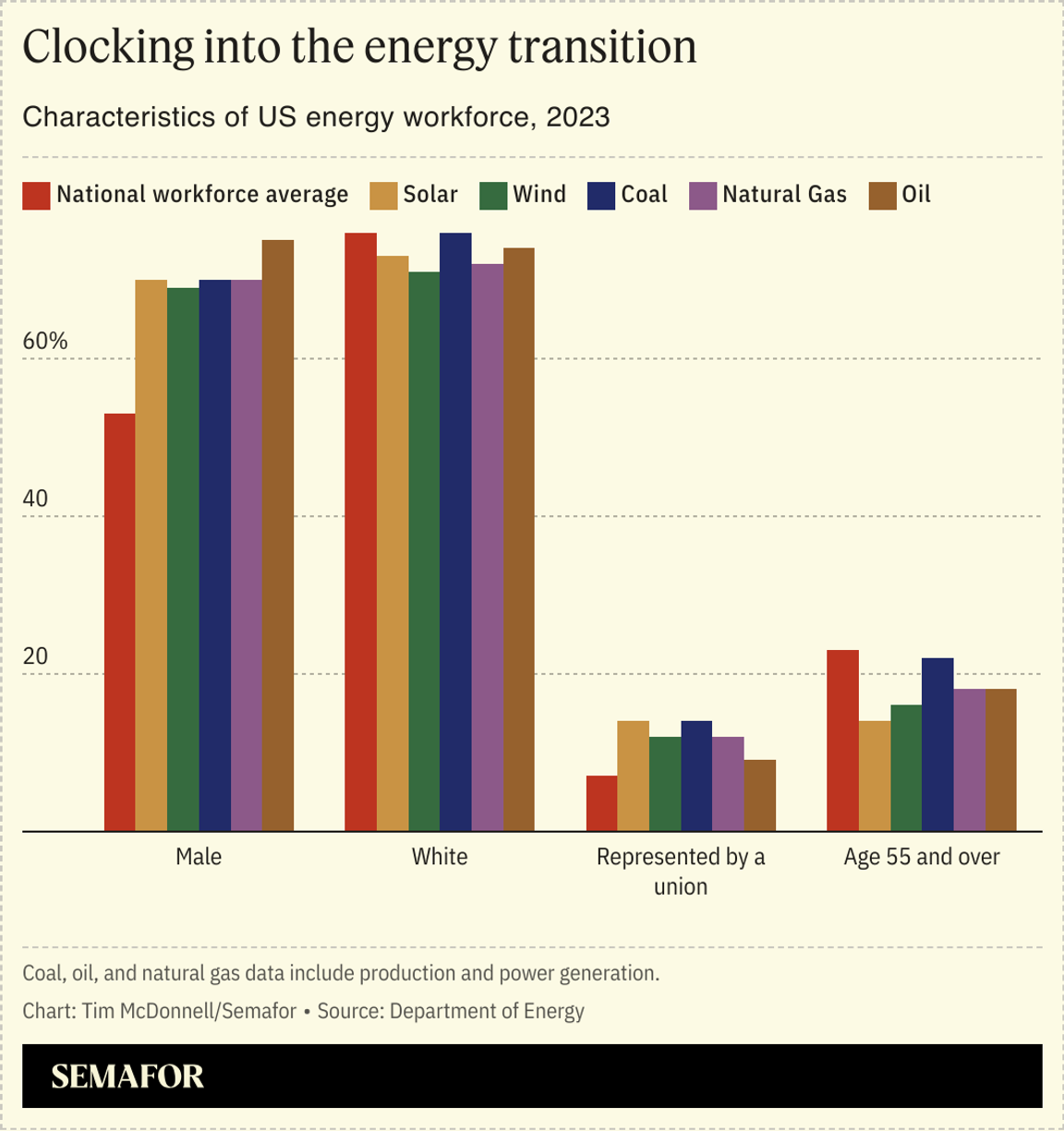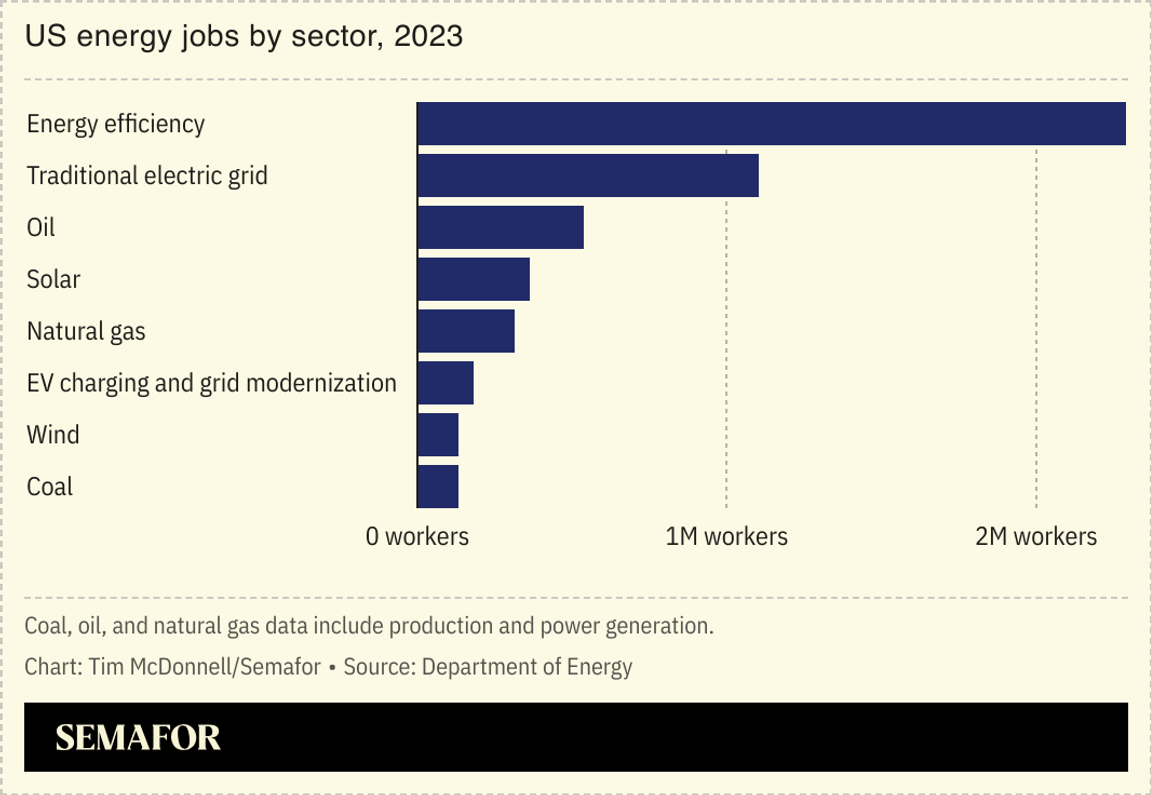Clean energy is a leading creator of jobs in the US, new federal data show, but the industry still faces a gaping gender gap.  The clean energy sector added 142,000 new jobs from 2022 to 2023, representing a growth rate of 4.2%, more than double the economy-wide average. Jobs in fossil fuel production also grew during that time, by 2.6%. The jobs data reveals that the boom in clean energy investment spurred by the Inflation Reduction Act is already translating to one of the biggest employment opportunities in a generation. They also offer some evidence that the quality of those jobs is improving: For the first time last year, the average rate of union membership for clean energy jobs surpassed the fossil fuel sector. That’s a direct result of the IRA, which stipulates that clean energy projects can only qualify for the highest tax refund if they meet federal prevailing wage standards and higher a certain number of apprentices. The value of the tax credits, in other words, is high enough to reverse the race-to-the-bottom pay trend that was previously the clean energy industry’s status quo, said Lara Skinner, executive director of Cornell University’s Climate Jobs Institute. There’s more work to be done to ensure the energy transition isn’t a net loss for workers, Skinner said. That includes better enforcement by tax authorities of companies’ compliance with IRA labor provisions. To solve the industry’s gender gap — 70% of solar and wind workers are men — additional legislation may be required, she said.  |